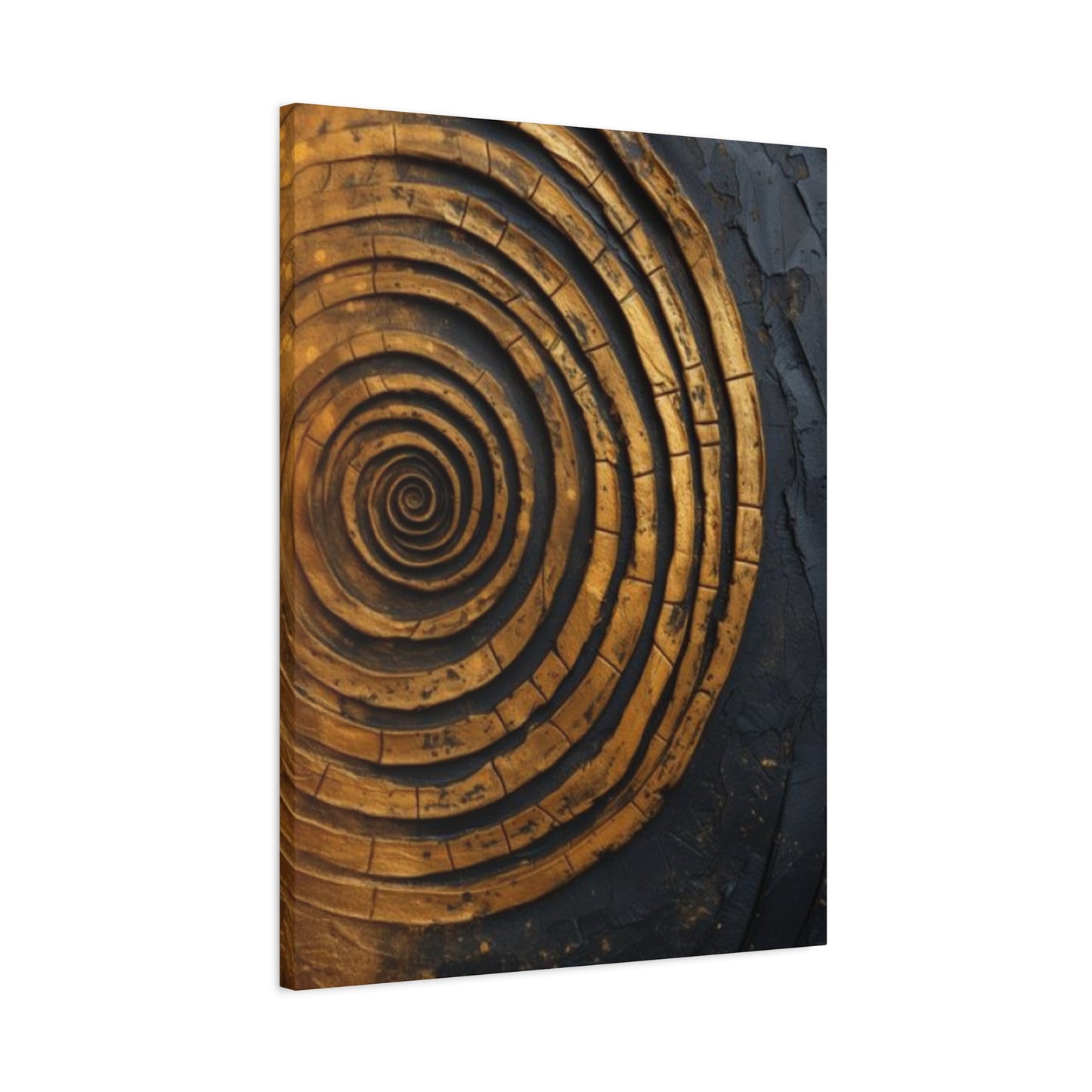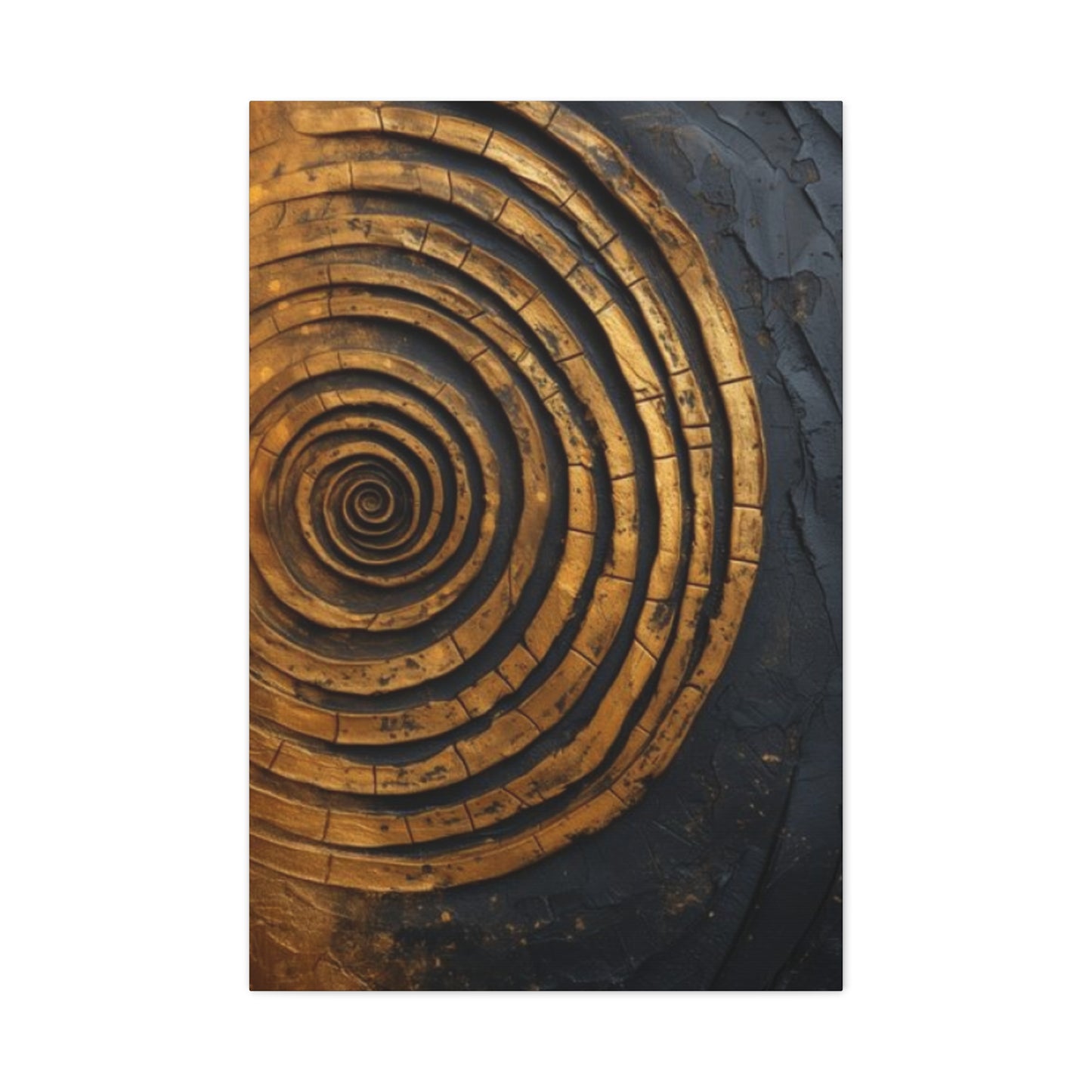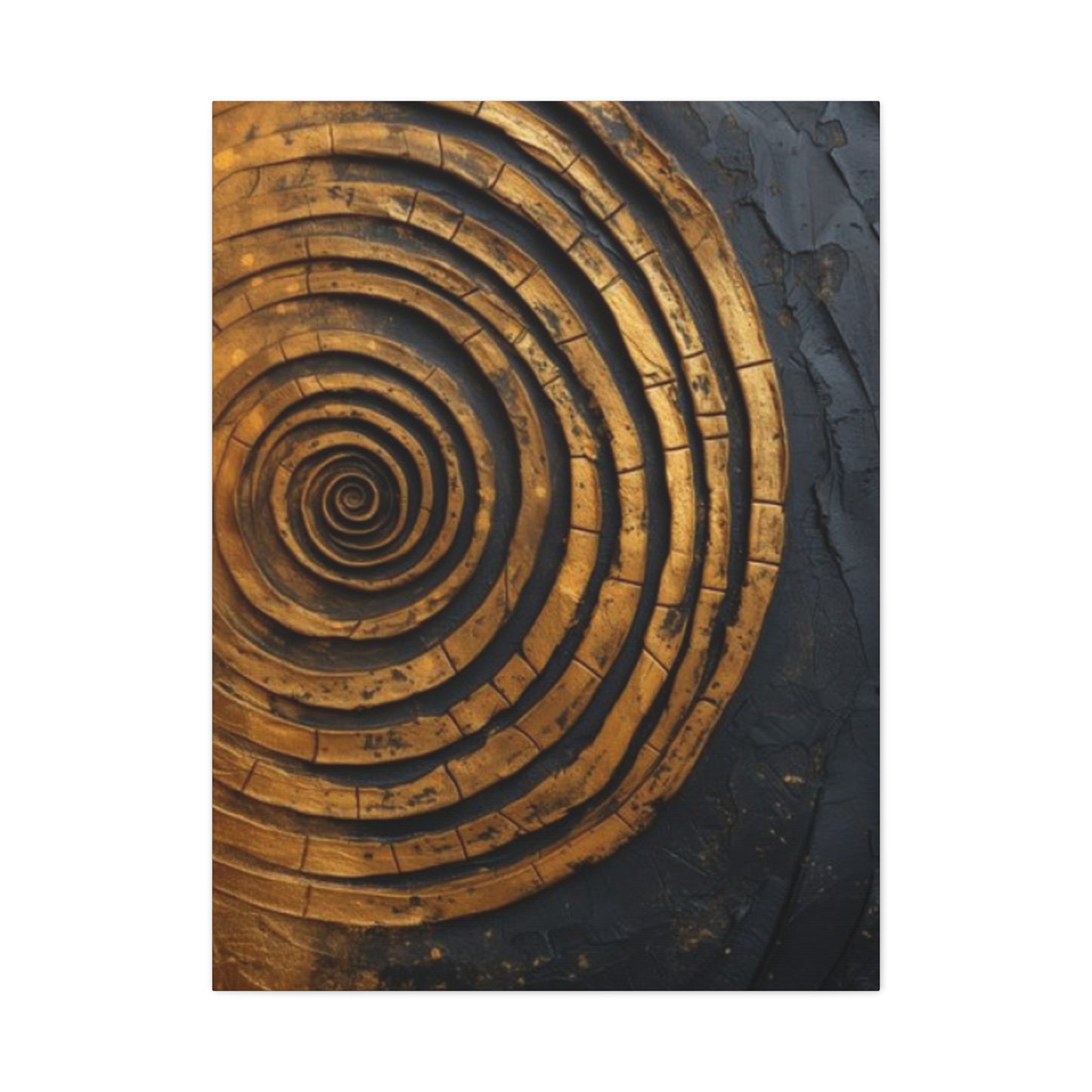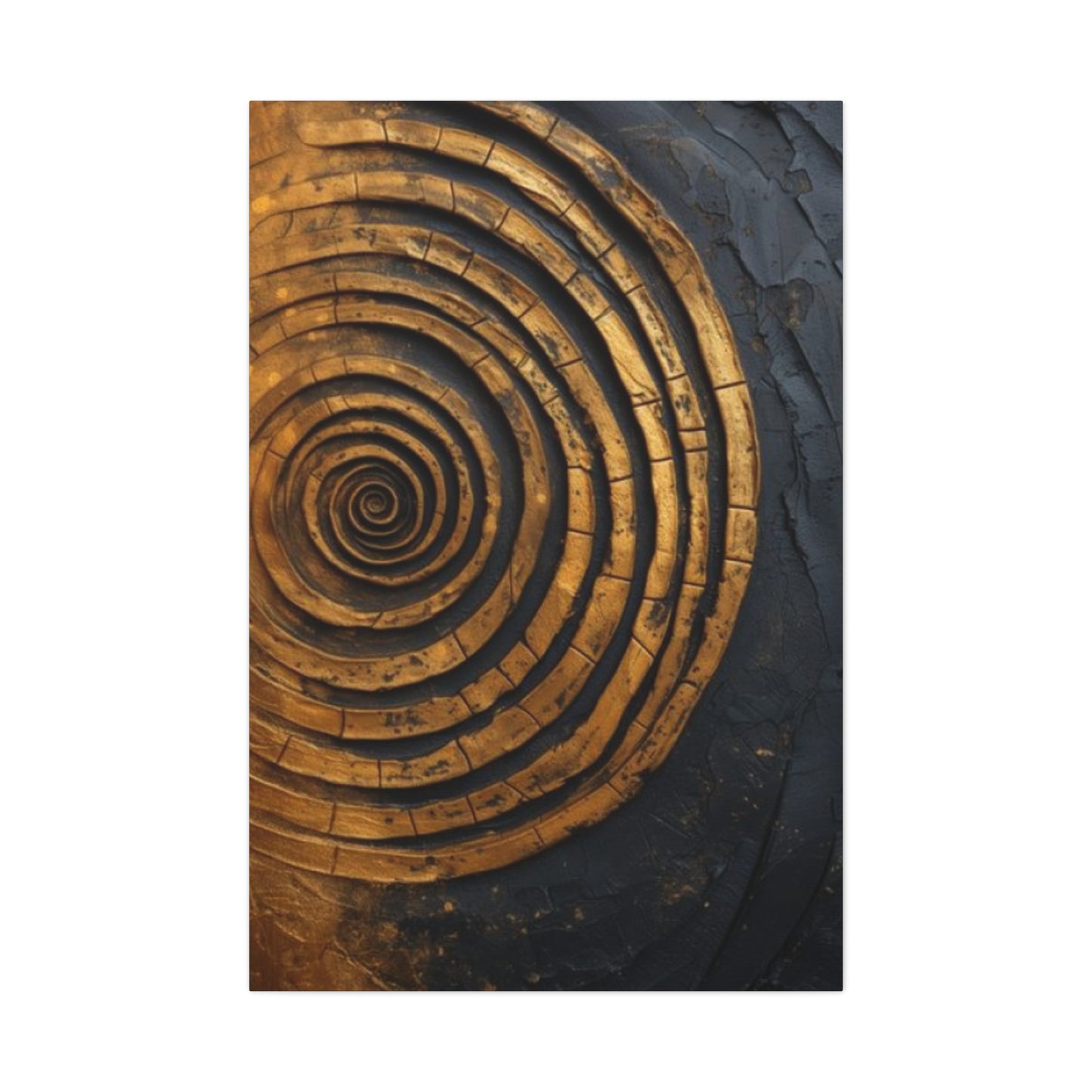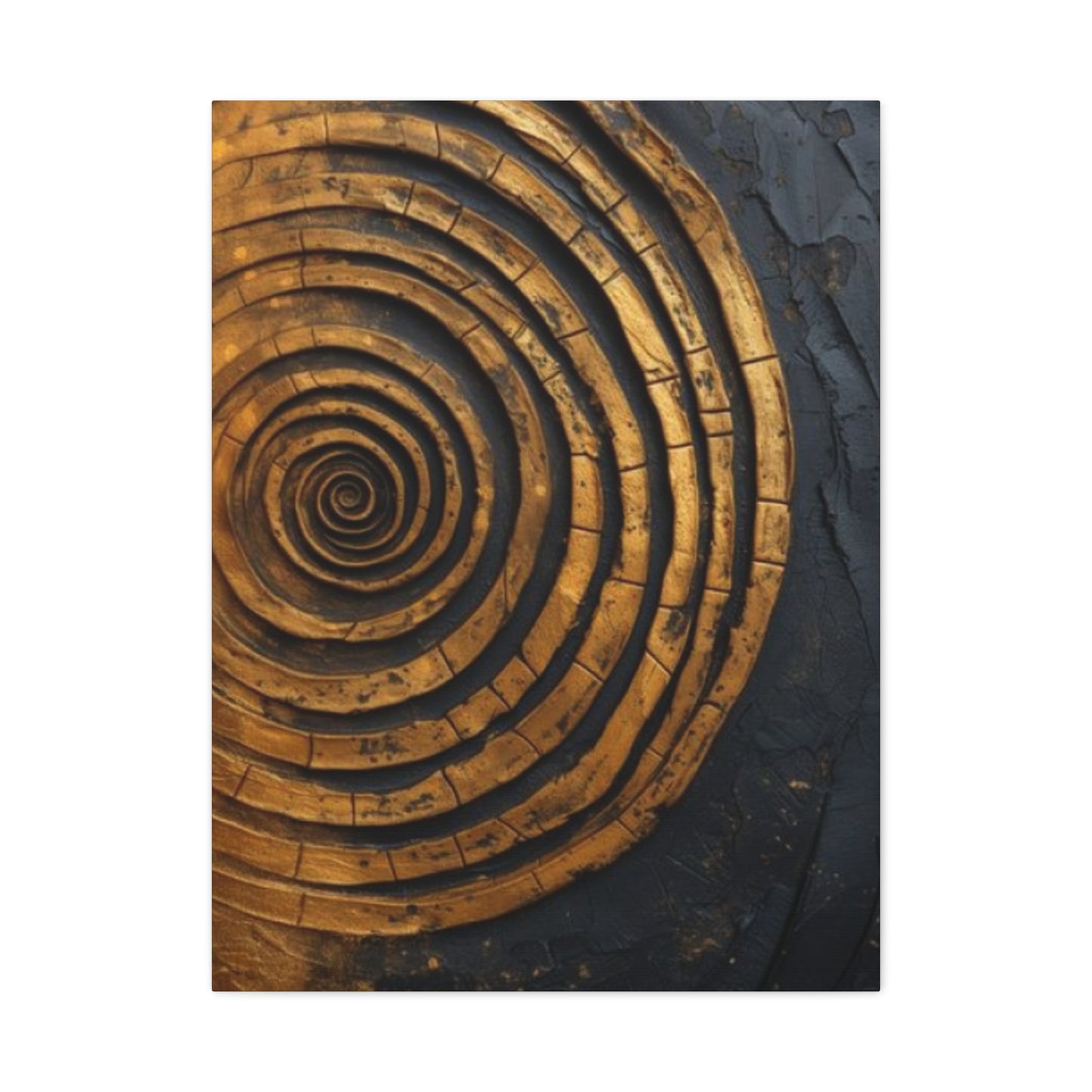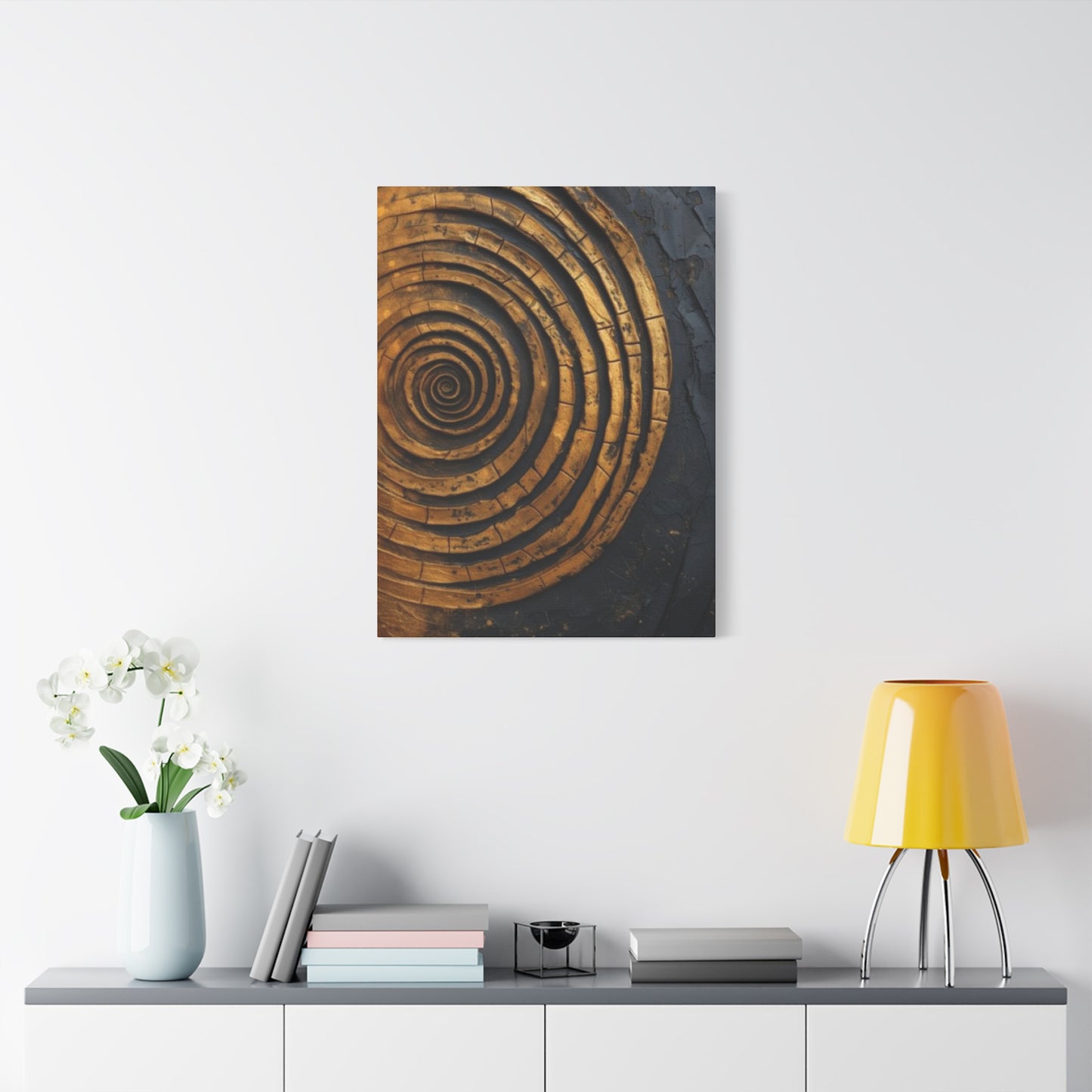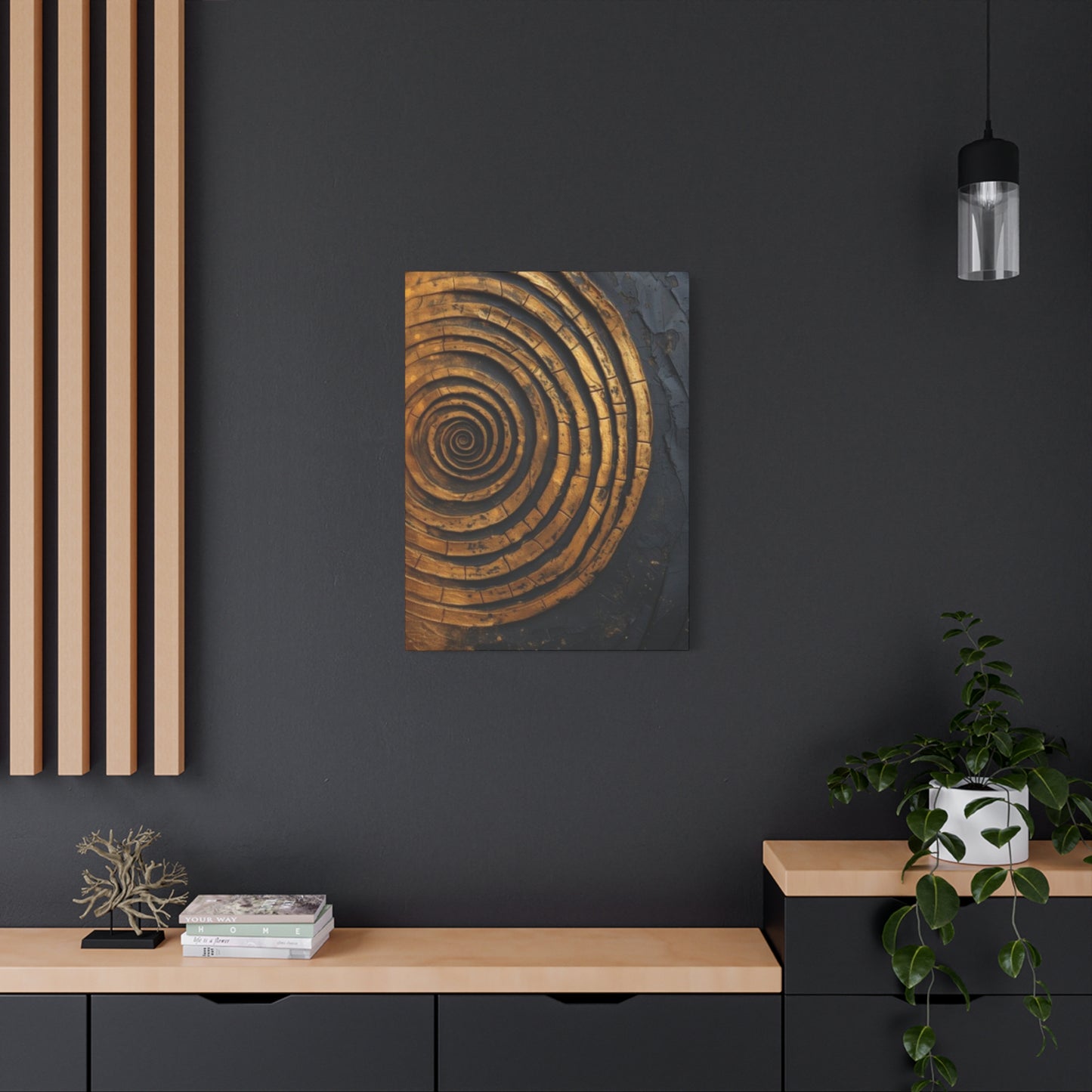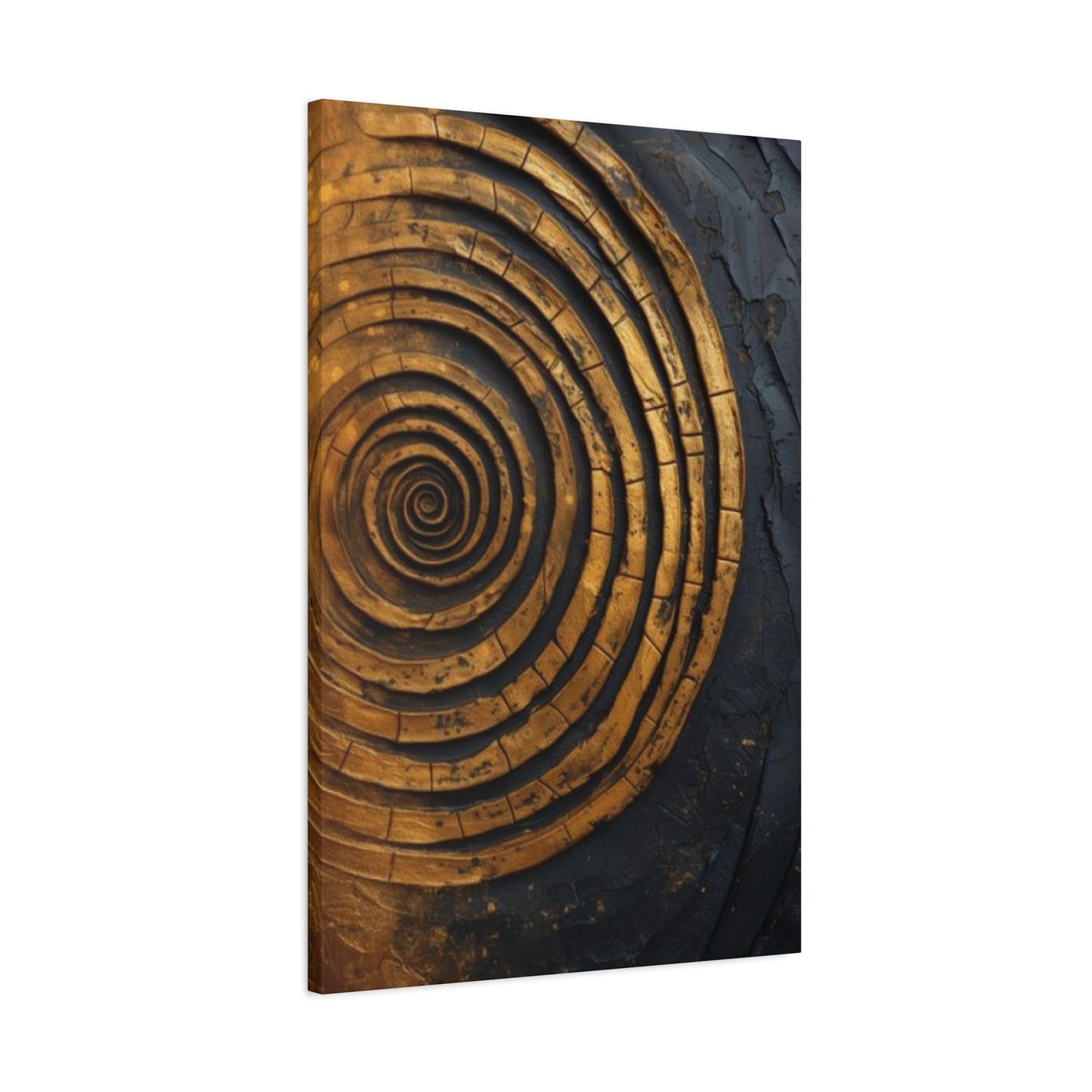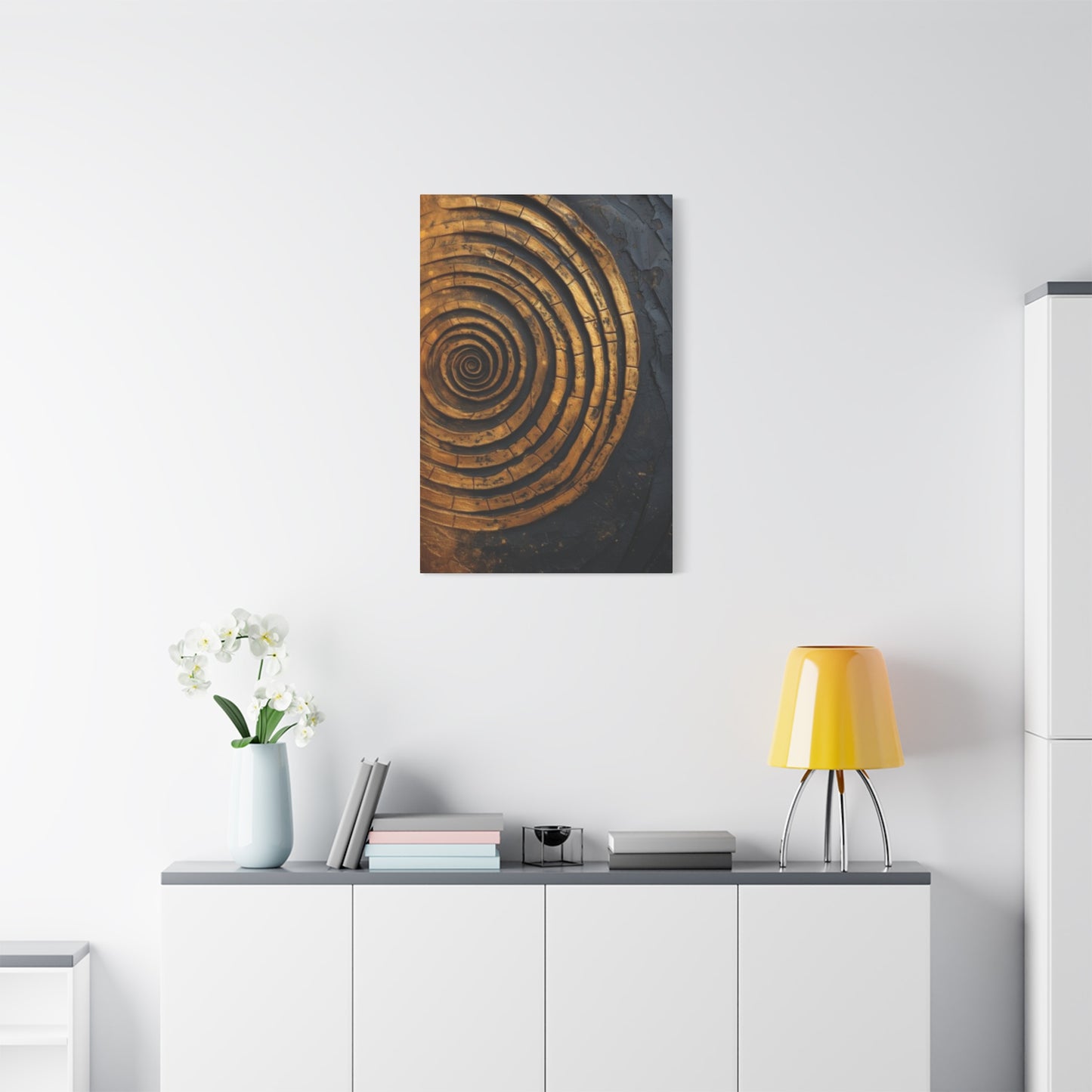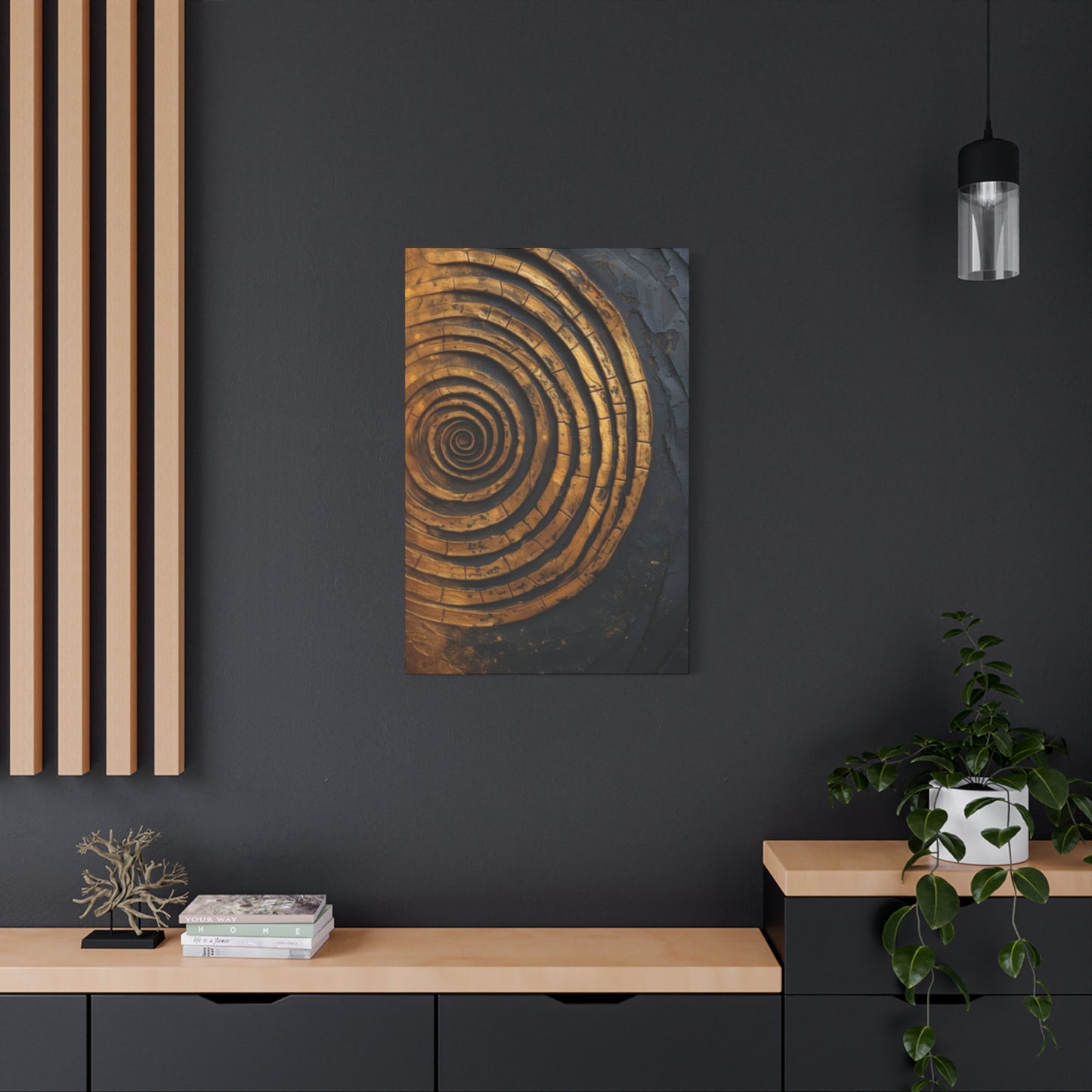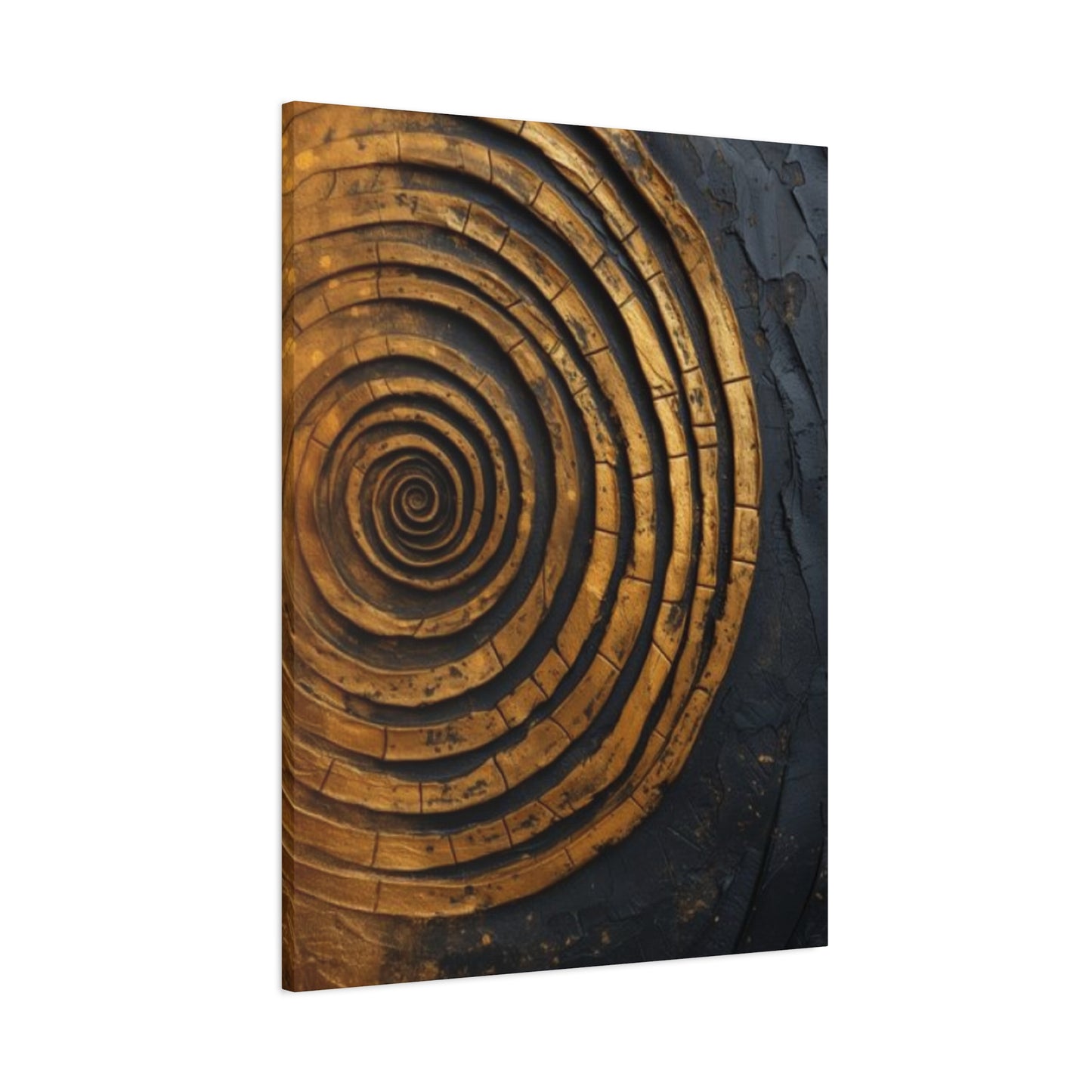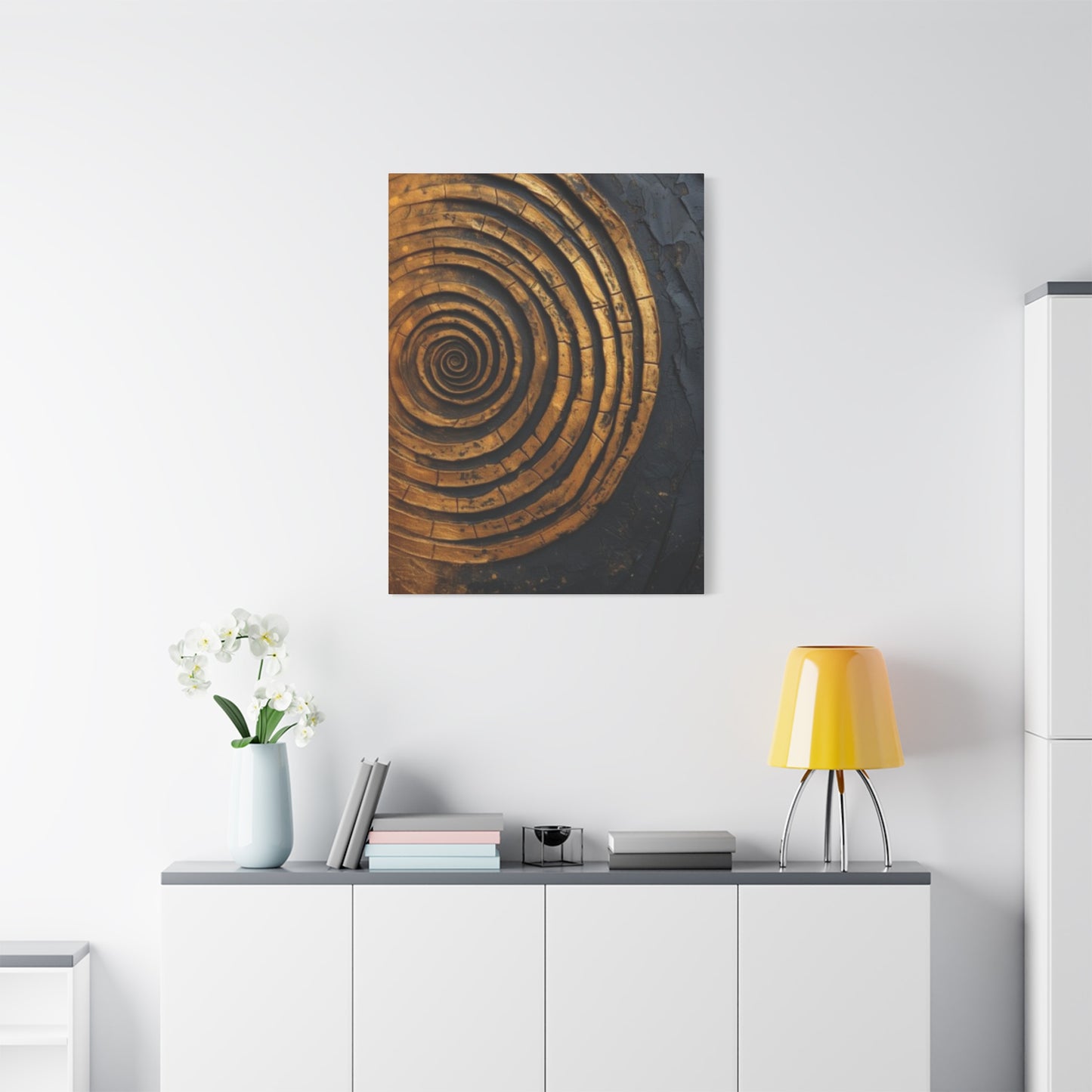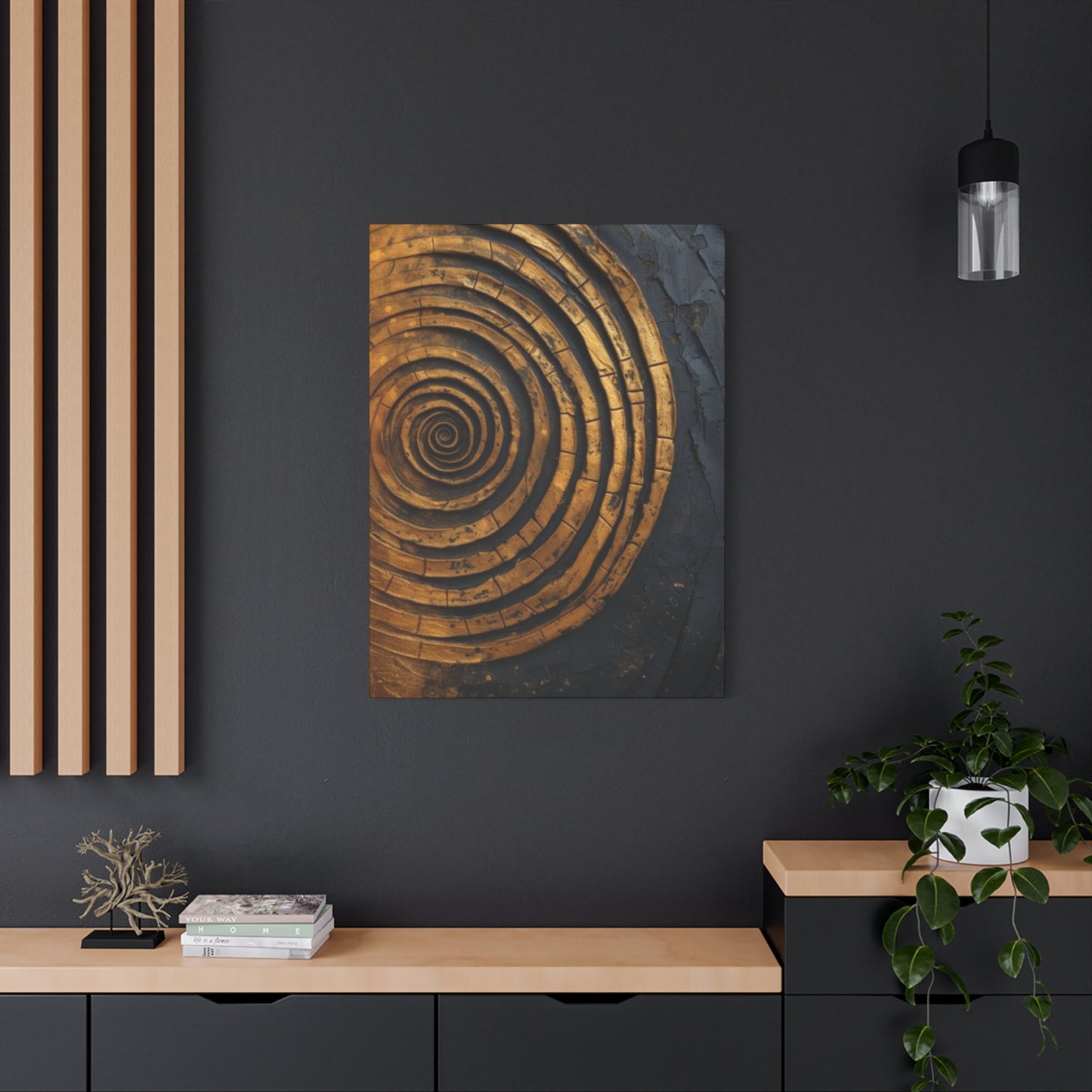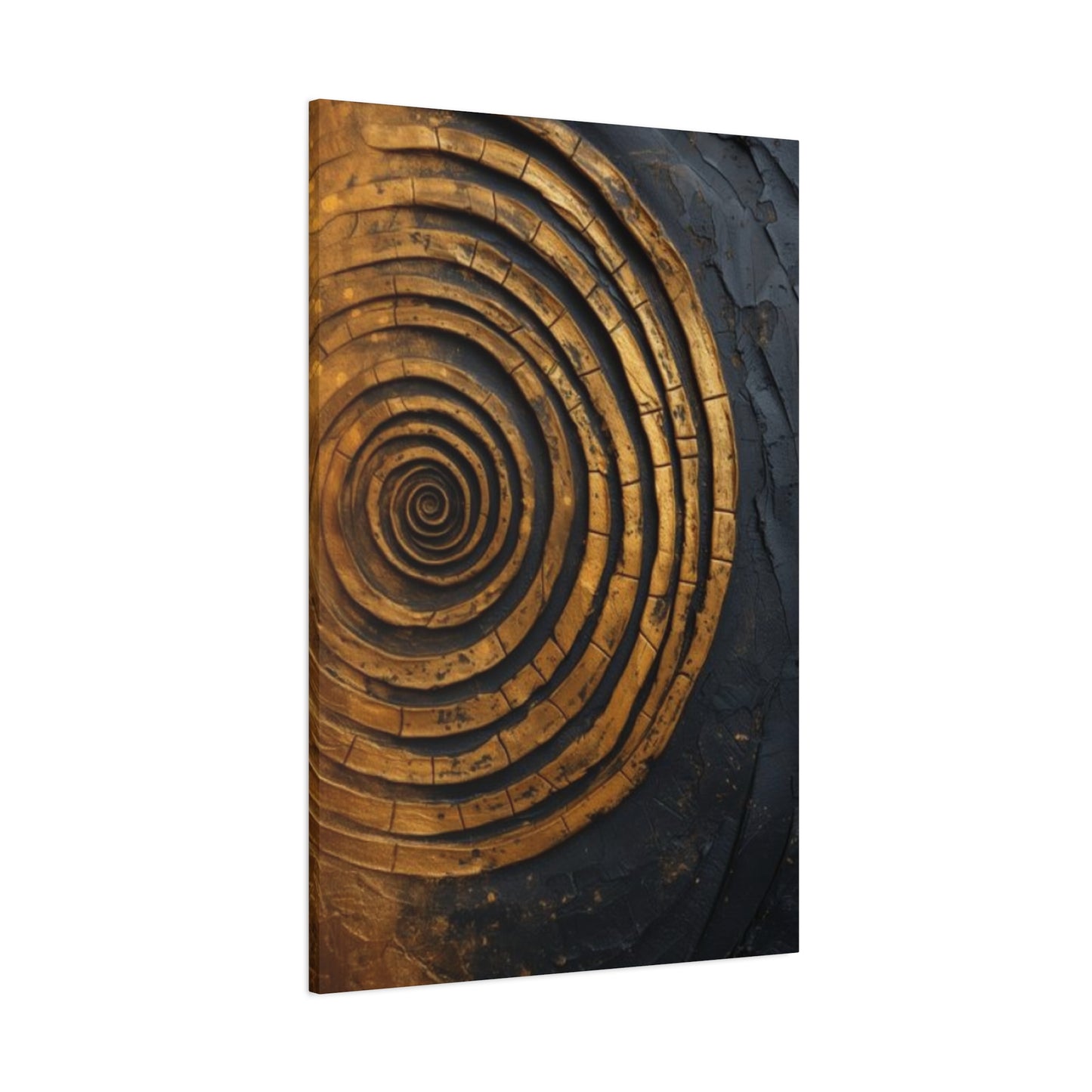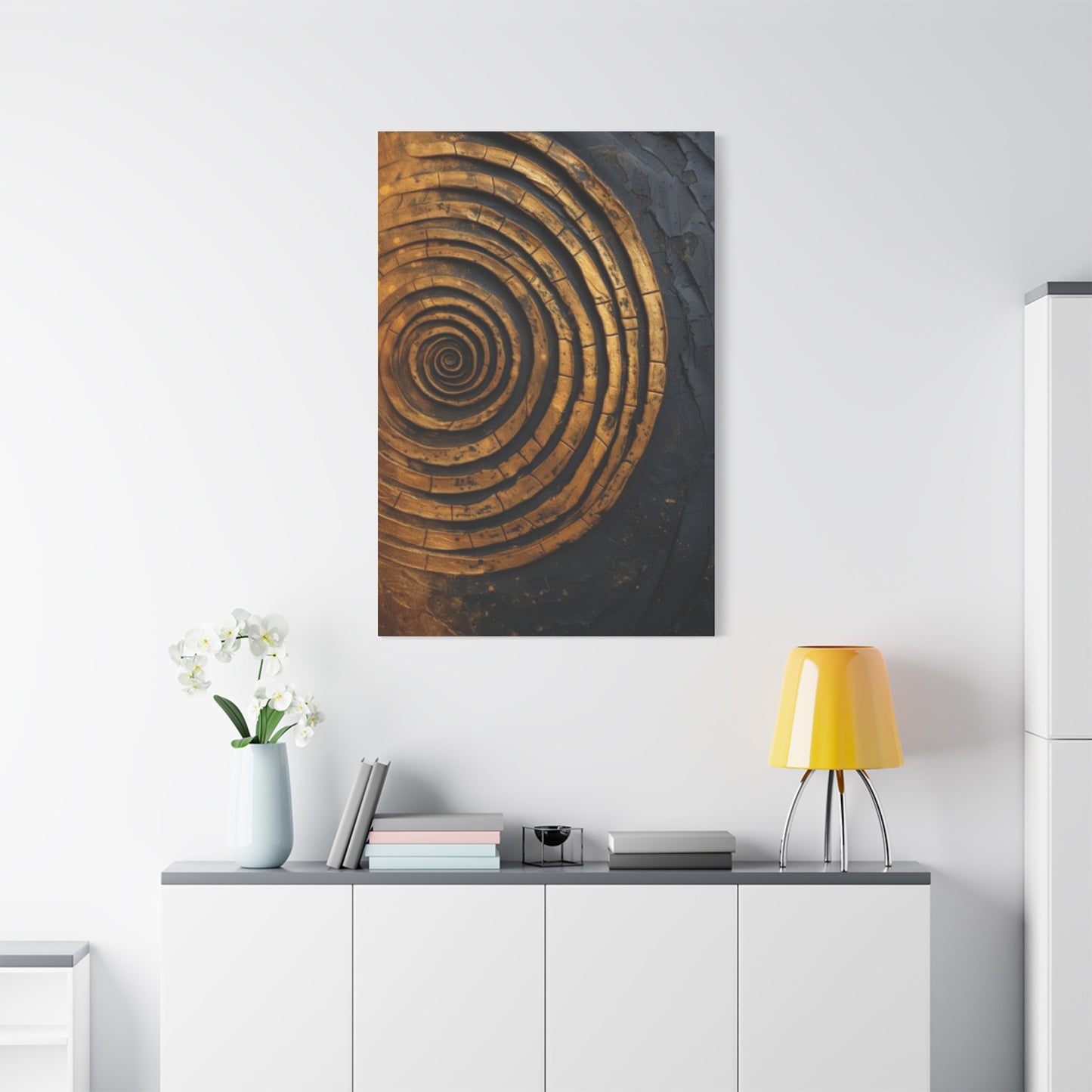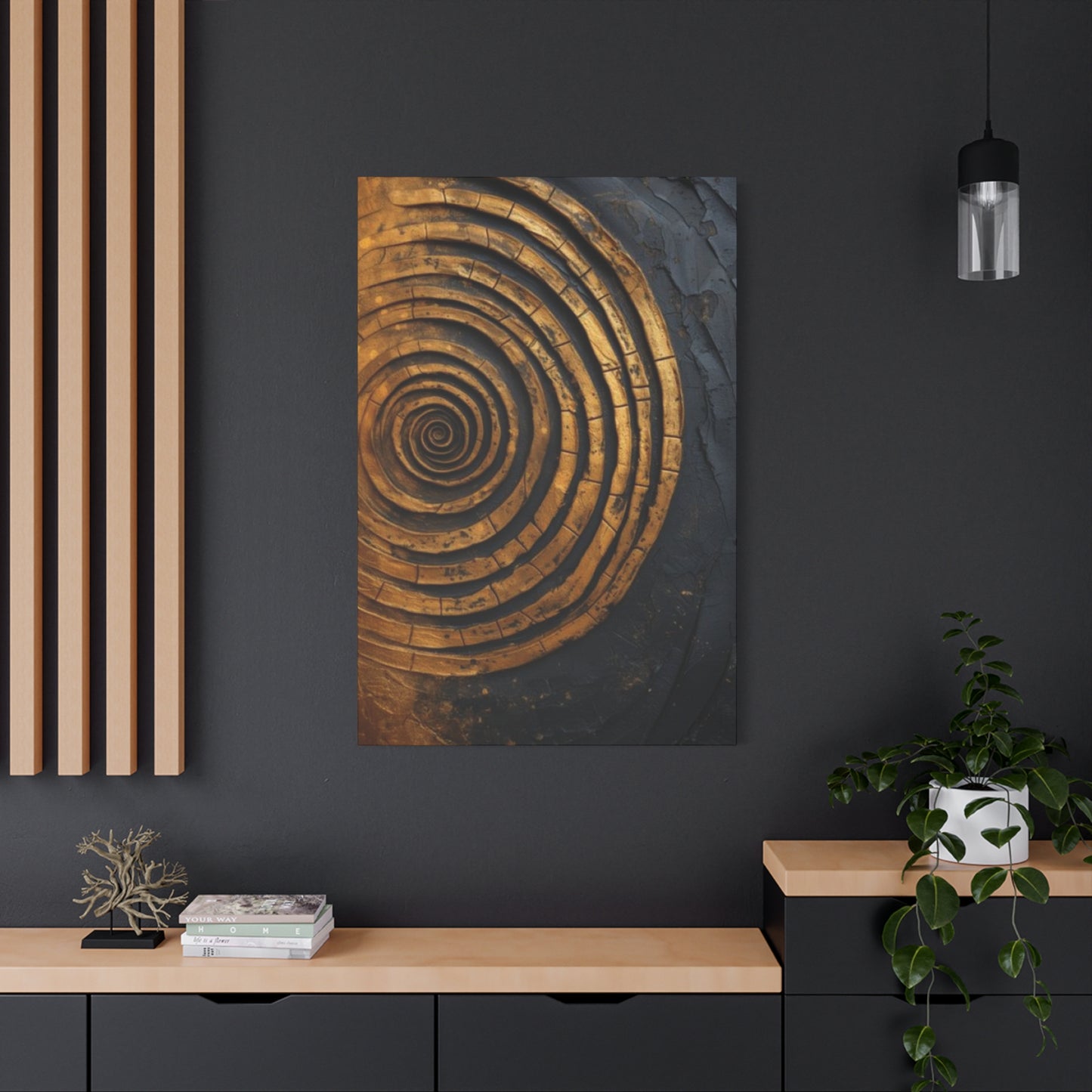Spiral Wall Art: Creating Personal Expression Through Circular Motion and Self-Discovery
The journey of self-expression through artistic creation has taken countless forms throughout human history, yet few artistic movements capture the essence of personal identity quite like spiral wall art. This captivating form of visual expression combines the mathematical precision of geometric patterns with the deeply personal nature of self-reflection, creating pieces that serve as both decorative elements and profound statements of individual identity.
Spiral wall art represents more than mere decoration; it embodies the cyclical nature of human experience, the continuous journey of growth, and the infinite possibilities that emerge when we dare to look within ourselves. Each curve, each line, and each color choice becomes a deliberate act of self-discovery, transforming blank canvases into windows that reveal the artist's innermost thoughts, emotions, and experiences.
The power of spiral wall art lies in its ability to capture motion within stillness, to represent the dynamic nature of human consciousness through static visual elements. When we engage with this art form, whether as creators or observers, we enter into a dialogue with patterns that have fascinated humanity since ancient times. From the golden ratio spirals found in nature to the meditative mandalas of Eastern traditions, circular and spiral forms have long served as vehicles for contemplation and self-exploration.
The Psychological Foundation of Spiral Artistic Expression
The human fascination with spiral forms extends far beyond aesthetic appreciation, reaching into the fundamental structures of how we process information, experience emotions, and construct our sense of self. When artists choose to work with spiral motifs in their wall art, they tap into archetypal patterns that resonate with universal human experiences while simultaneously creating something uniquely personal.
Research in psychology and neuroscience suggests that circular and spiral patterns activate specific neural pathways associated with memory, emotion, and spatial processing. The brain's natural tendency to seek patterns and create meaning from visual stimuli makes spiral wall art particularly engaging, as viewers often find themselves drawn into the work, following the curves and discovering new details with each observation.
The spiral's mathematical properties create a sense of movement that our eyes naturally want to follow, creating an almost hypnotic effect that can induce states of relaxation and contemplation. This quality makes spiral wall art particularly effective in environments where people seek tranquility, reflection, or inspiration. The gentle curves and flowing lines create visual rhythms that can help calm the mind and provide a focal point for meditation or quiet contemplation.
From a therapeutic perspective, creating spiral wall art can serve as a form of art therapy, allowing individuals to externalize internal experiences through the act of mark-making and color selection. The repetitive nature of spiral creation can be meditative, providing a structured yet flexible framework for exploring emotions, memories, and aspirations. Many artists report entering flow states while working on spiral compositions, experiencing a sense of timelessness and deep engagement that promotes both creative expression and emotional healing.
The spiral's symbolism as a representation of growth, evolution, and the cyclical nature of life makes it particularly relevant for artists exploring themes of personal development and transformation. Unlike linear forms that suggest definitive beginnings and endings, spirals imply continuous movement and infinite possibility, making them ideal vehicles for expressing the ongoing nature of human experience and personal growth.
Historical Context and Cultural Significance in Contemporary Wall Art
The use of spiral motifs in artistic expression spans thousands of years and crosses virtually every culture on Earth. From the ancient Celtic spirals carved into stone monuments to the intricate spiral patterns found in Islamic geometric art, this fundamental form has served as a bridge between the mathematical order of the universe and the human desire for meaningful expression.
In contemporary wall art, spiral forms have experienced a renaissance as artists seek to create works that combine traditional wisdom with modern aesthetic sensibilities. The digital age has provided new tools and techniques for creating spiral art, from computer-generated patterns to precision-cut materials that allow for incredibly detailed and complex designs. However, the core appeal of the spiral remains unchanged: its ability to represent the infinite within the finite, the personal within the universal.
Modern spiral wall art often incorporates elements from various cultural traditions, creating hybrid forms that speak to our increasingly interconnected world. Artists might combine the sacred geometry of mandala traditions with contemporary color palettes and materials, or integrate the flowing lines of Art Nouveau spirals with minimalist design principles. This cultural mixing creates opportunities for cross-cultural dialogue and understanding while allowing individual artists to draw from a rich reservoir of historical precedents.
The rise of personalized home decoration has created new markets and applications for spiral wall art. As people increasingly seek to create living environments that reflect their individual personalities and values, spiral art offers a sophisticated yet accessible way to introduce meaningful visual elements into residential and commercial settings. The versatility of spiral forms allows them to complement a wide range of architectural styles and decorative schemes while maintaining their distinctive character and symbolic resonance.
Contemporary artists working with spiral themes often explore the tension between tradition and innovation, using time-honored forms to address very modern concerns about identity, technology, and social change. The spiral's ancient associations with growth and transformation make it particularly relevant for artists grappling with rapid technological change and evolving social structures. By grounding contemporary concerns in archetypal forms, spiral wall art can provide viewers with a sense of continuity and connection to larger patterns of human experience.
Technical Approaches to Creating Spiral Wall Art
The creation of spiral wall art requires a combination of technical skill, artistic vision, and mathematical understanding. While the basic spiral form might appear simple, achieving the kind of precision and visual impact that characterizes high-quality spiral wall art demands careful attention to proportion, color relationships, and compositional balance.
Traditional hand-drawing techniques remain fundamental to spiral art creation, requiring artists to develop steady hands and keen eyes for proportion. The use of compass and straightedge tools allows for precise geometric construction, while freehand approaches can introduce organic variations that add life and personality to spiral forms. Many artists combine both approaches, using geometric frameworks as starting points for more intuitive and expressive mark-making.
Digital tools have revolutionized spiral art creation, providing artists with unprecedented precision and flexibility in developing complex spiral compositions. Vector graphics software allows for mathematical precision in spiral construction while providing easy ways to experiment with color, texture, and layering effects. The ability to create perfect mathematical spirals digitally frees artists to focus on compositional and aesthetic decisions rather than technical execution.
Mixed media approaches to spiral wall art have gained popularity as artists seek to create works with greater physical presence and textural interest. Combining painted elements with collage materials, found objects, or three-dimensional elements can transform flat spiral designs into sculptural wall pieces that engage viewers on multiple sensory levels. The interplay between different materials and techniques can create rich visual experiences that reward close examination and repeated viewing.
Color theory plays a crucial role in effective spiral wall art, as the curved lines of spiral forms create unique opportunities for color interaction and optical effects. The way colors blend and contrast along spiral curves can create sensations of movement and depth that enhance the form's natural dynamism. Understanding how different color combinations affect the perceived speed and direction of spiral movement allows artists to create works that guide viewers' eyes and emotions in sophisticated ways.
Scale considerations are particularly important in wall art applications, as spiral compositions must work effectively at the size and viewing distance appropriate for their intended installation. What works as an intimate tabletop piece may lose impact when enlarged for wall display, while designs intended for large-scale installation may appear cluttered or overwhelming when viewed at close range. Successful spiral wall artists develop sensitivity to these scale relationships and adjust their designs accordingly.
Color Psychology and Emotional Resonance in Spiral Compositions
The psychological impact of color in spiral wall art extends far beyond simple aesthetic preference, tapping into deep-seated associations and emotional responses that can profoundly affect viewers' experiences. When combined with the inherently dynamic form of the spiral, color choices become powerful tools for creating specific moods, encouraging particular types of contemplation, and evoking targeted emotional responses.
Warm colors such as reds, oranges, and yellows tend to accelerate the perceived movement of spiral forms, creating sensations of energy, passion, and outward expansion. These colors can make spiral wall art feel more dynamic and engaging, drawing viewers into active participation with the work. The use of warm color progressions along spiral paths can create visual narratives that suggest growth, excitement, or transformation, making them particularly effective for motivational or inspirational applications.
Cool colors including blues, greens, and purples often slow the perceived movement of spirals, creating more meditative and introspective experiences. These colors can make spiral wall art feel calming and centering, encouraging quiet contemplation and inner reflection. Cool color spirals often work well in environments designed for relaxation, study, or spiritual practice, where the goal is to create a sense of peace and focused attention.
The strategic use of color contrast along spiral paths can create dramatic visual effects that enhance the form's natural sense of movement and depth. High contrast combinations create more aggressive, attention-grabbing effects, while subtle gradations can produce gentle, soothing movements that unfold gradually as viewers spend time with the work. Understanding these relationships allows artists to calibrate the emotional intensity of their spiral wall art to match the intended function and environment.
Monochromatic color schemes in spiral wall art can create sophisticated effects that emphasize form and movement over chromatic relationships. Working within a single color family allows artists to explore subtle variations in saturation, brightness, and temperature while maintaining overall visual unity. These approaches can be particularly effective in minimalist or contemporary settings where bold color statements might compete with other design elements.
Cultural color associations add another layer of meaning to spiral wall art, as different cultures attribute various symbolic meanings to specific colors. Artists working for diverse audiences must consider how their color choices might be interpreted across different cultural contexts, while those creating for specific communities can draw on shared color symbolism to enhance their work's resonance and meaning.
Geometric Principles and Mathematical Beauty in Spiral Design
The mathematical foundations of spiral forms provide both structural frameworks and sources of aesthetic appeal that distinguish high-quality spiral wall art from merely decorative circular designs. Understanding the geometric principles underlying different types of spirals allows artists to create works with inherent harmony and visual logic that resonates with viewers on both conscious and subconscious levels.
The golden ratio spiral, based on the mathematical constant phi, appears frequently in nature and has been prized by artists and architects for its inherently pleasing proportions. Wall art incorporating golden ratio spirals often feels naturally balanced and harmonious, as these proportions align with patterns that humans have evolved to recognize as beautiful and meaningful. The precision required to execute true golden ratio spirals challenges artists to develop their technical skills while creating works with timeless appeal.
Archimedean spirals, characterized by constant spacing between successive turns, offer different aesthetic qualities and practical advantages for wall art applications. These spirals grow at steady rates, creating predictable patterns that can be easier to integrate into architectural settings with regular proportions. The mathematical regularity of Archimedean spirals can create sense of order and stability that works well in formal or professional environments.
Logarithmic spirals, which maintain constant angles as they expand, create dynamic growth patterns that can suggest organic development and natural processes. These spirals appear in everything from nautilus shells to galaxy formations, connecting spiral wall art to the broader patterns found throughout the natural world. Artists working with logarithmic spirals can tap into viewers' innate recognition of these forms while creating works that feel both mathematical and organic.
The interplay between multiple spiral systems within single compositions creates opportunities for complex visual relationships and layered meanings. Overlapping spirals moving in different directions can create interference patterns and optical effects that add depth and visual interest to wall art installations. These multi-spiral compositions require careful planning and execution but can produce works of remarkable sophistication and visual impact.
Fractal spiral patterns, which repeat similar forms at different scales, can create wall art with virtually infinite detail and complexity. These self-similar patterns reward close examination while maintaining coherent overall compositions, making them particularly suitable for large-scale installations where viewers might encounter the work at various distances and angles.
Personal Symbolism and Individual Expression Through Spiral Motifs
The deeply personal nature of spiral wall art creation allows artists to embed individual experiences, memories, and aspirations within universal forms, creating works that function simultaneously as personal statements and broadly accessible visual experiences. This duality makes spiral wall art particularly powerful as a medium for self-expression and identity exploration.
Individual artists often develop personal iconographies and symbolic systems within their spiral work, using specific colors, patterns, or compositional approaches to represent particular aspects of their experience or worldview. These personal languages allow for the creation of series or bodies of work that explore consistent themes while offering variety and development over time. Viewers familiar with an artist's symbolic vocabulary can read deeper meanings into individual pieces while newcomers can appreciate the works on purely visual levels.
The process of creating spiral wall art often becomes as important as the finished product, with many artists reporting that the meditative quality of spiral construction provides opportunities for self-reflection and problem-solving. The repetitive yet creative nature of spiral-making can induce states similar to those achieved through meditation or other contemplative practices, making the art creation process itself a form of personal development and spiritual practice.
Memory mapping through spiral forms offers unique opportunities for representing the non-linear nature of human recollection and experience. Unlike chronological or hierarchical organizational systems, spirals can represent the way memories layer upon one another, circling back to previous experiences while simultaneously moving forward into new territory. This makes spiral wall art particularly effective for exploring themes of personal history, family relationships, and emotional development.
The collaborative potential of spiral wall art creation allows for shared experiences that can strengthen relationships and build community connections. Family members or groups can work together on spiral compositions, with each person contributing elements that represent their individual perspectives while participating in a unified creative project. These collaborative works often become meaningful artifacts that celebrate both individual contributions and collective achievement.
Therapeutic applications of spiral wall art creation have shown promise in various healing contexts, from grief counseling to addiction recovery. The non-threatening nature of geometric forms combined with the meditative qualities of spiral creation can provide safe frameworks for exploring difficult emotions and experiences. Many therapists and counselors have incorporated spiral art activities into their practice, finding that the process often facilitates breakthrough insights and emotional releases.
Material Considerations and Surface Treatments for Wall Installation
The choice of materials and surface treatments for spiral wall art significantly impacts both the aesthetic qualities and practical considerations of installation and maintenance. Different materials offer distinct advantages and challenges, requiring careful consideration of factors including durability, visual impact, installation requirements, and budget constraints.
Traditional painting media including acrylics, oils, and watercolors remain popular choices for spiral wall art, offering familiar working properties and broad color palettes. Canvas and paper supports provide relatively affordable options for artists developing their spiral art practice, while also offering the flexibility to experiment with different techniques and approaches. The texture of canvas can add visual interest to spiral compositions, while smooth paper surfaces allow for precise line work and subtle color gradations.
Wood panel supports offer increased durability and can provide interesting textural backgrounds for spiral compositions. The natural grain patterns in wood can either complement or contrast with spiral designs, creating layered visual experiences that combine organic and geometric elements. Wood panels also accept a wide variety of media and can be easily cut into custom shapes that enhance spiral compositions.
Metal surfaces including aluminum, steel, and copper provide contemporary aesthetics and excellent durability for spiral wall art installations. These materials can be painted, etched, or treated with various chemical processes to create unique surface textures and color effects. The reflective properties of polished metals can add dynamic lighting effects to spiral compositions, while oxidized or patinated surfaces can provide rich, complex backgrounds for spiral elements.
Digital printing technologies have expanded the possibilities for spiral wall art reproduction and customization, allowing artists to create high-quality prints on a wide variety of substrates including canvas, metal, acrylic, and specialty papers. These technologies enable precise color reproduction and can accommodate very large format installations that would be impractical to execute by hand. Digital approaches also allow for easy customization and variation, enabling artists to create personalized versions of spiral designs for different clients or applications.
Three-dimensional approaches to spiral wall art including carved reliefs, layered constructions, and mixed-media assemblages can create works with significant physical presence and visual impact. These approaches require consideration of additional factors including weight, mounting requirements, and lighting effects, but can produce wall art that engages viewers on multiple sensory levels and creates dramatic architectural focal points.
Installation Techniques and Environmental Considerations
The successful installation of spiral wall art requires careful attention to both technical mounting requirements and environmental factors that can affect the work's appearance and longevity. Proper installation not only ensures the safety and security of the artwork but also maximizes its visual impact and integration with the surrounding environment.
Wall preparation and assessment form the foundation of successful spiral wall art installation. Different wall materials and conditions require specific mounting approaches, from simple picture hanging systems for lightweight pieces to substantial anchoring systems for large or heavy installations. Understanding the structural capabilities of different wall types helps ensure safe and secure mounting while avoiding damage to both the artwork and the building.
Lighting considerations play a crucial role in spiral wall art presentation, as the curved forms and potentially reflective surfaces can create complex interactions with both natural and artificial light sources. The direction, intensity, and color temperature of lighting can dramatically affect how spiral compositions are perceived, potentially enhancing or diminishing their visual impact. Strategic lighting placement can create dramatic shadow effects that add depth and movement to spiral wall art.
Climate control factors including temperature, humidity, and air circulation can significantly impact the longevity and appearance of spiral wall art, particularly pieces created with organic materials or traditional media. Understanding the environmental requirements of different materials helps inform decisions about appropriate installation locations and any necessary protective measures.
Scale relationships between spiral wall art and surrounding architectural elements require careful consideration to achieve optimal visual balance and impact. Pieces that are too small for their setting may appear insignificant, while oversized works can overwhelm their environments. Understanding principles of proportion and visual weight helps artists and installers make appropriate sizing decisions for different applications.
Maintenance and conservation considerations should be addressed during the installation planning phase, ensuring that mounted spiral wall art remains accessible for cleaning and any necessary repairs. Different materials and mounting systems may require specific maintenance approaches, and providing clear care instructions helps ensure the longevity of the installation.
Therapeutic Applications and Wellness Benefits
The creation and contemplation of spiral wall art offer significant therapeutic benefits that extend far beyond aesthetic appreciation, providing valuable tools for stress reduction, emotional processing, and personal growth. Mental health professionals and wellness practitioners increasingly recognize the potential of spiral art activities in various therapeutic contexts.
Stress reduction through spiral art creation occurs partly through the meditative qualities of repetitive mark-making and the focused attention required for precise geometric construction. The rhythmic nature of spiral drawing can help regulate breathing and heart rate, creating physiological responses similar to those achieved through meditation or relaxation exercises. Many practitioners report feeling calmer and more centered after spending time creating spiral compositions.
Anxiety management benefits emerge from the structured yet creative nature of spiral art activities. Unlike completely open-ended creative exercises that can feel overwhelming to anxious individuals, spiral forms provide gentle frameworks that guide creative expression while allowing for personal variation and choice. The predictable nature of spiral construction can provide comfort and security while still offering opportunities for creative problem-solving and self-expression.
Depression treatment applications often focus on the forward-moving, growth-oriented symbolism of spiral forms, which can help individuals visualize and work toward positive change in their lives. Creating spiral art can provide concrete evidence of personal capability and creativity, countering the negative self-talk and hopelessness that characterize depressive episodes. The completion of spiral art pieces can generate feelings of accomplishment and pride that support overall mood improvement.
Trauma processing through spiral art creation allows individuals to explore difficult experiences within safe, symbolic frameworks. The non-linear nature of spiral forms can accommodate the complex, circular patterns that characterize trauma memories, while the creative process provides opportunities for reframing and integration. Many trauma therapists incorporate spiral art activities into their treatment protocols, finding that the indirect approach often facilitates breakthroughs that more direct verbal therapies cannot achieve.
Grief counseling applications draw on the spiral's symbolism of cycles, continuity, and transformation to help individuals process loss and develop new relationships with memories of deceased loved ones. Creating spiral art in memory of lost relationships can provide meaningful ways to honor the deceased while supporting the ongoing life journey of the grieving individual.
Cultural Integration and Cross-Cultural Applications
The universal appeal of spiral forms creates opportunities for cross-cultural dialogue and understanding through spiral wall art that transcends linguistic and cultural barriers. Artists and cultural institutions increasingly recognize the potential of spiral art projects to build bridges between different communities and traditions while celebrating the rich diversity of human creative expression.
Indigenous spiral traditions from around the world offer rich sources of inspiration and cultural exchange opportunities for contemporary spiral wall art. From Celtic triple spirals to Native American medicine wheels, traditional spiral forms carry deep cultural meanings that can inform and enrich contemporary artistic practice. Respectful engagement with these traditions requires cultural sensitivity and often direct collaboration with community members to ensure appropriate use and representation.
Religious and spiritual applications of spiral wall art draw on the form's ancient associations with sacred geometry, meditation, and transcendence. Many faith traditions incorporate spiral or circular forms in their artistic and architectural traditions, creating opportunities for interfaith dialogue and shared creative experiences. Spiral wall art can serve contemplative functions in various religious contexts while respecting the specific beliefs and practices of different communities.
Educational applications of spiral wall art provide engaging ways to explore mathematical concepts, cultural history, and artistic techniques across diverse student populations. The visual appeal and hands-on nature of spiral art creation can make abstract mathematical concepts more accessible while providing opportunities for personal expression and cultural exploration. Many educators report that spiral art projects successfully engage students who struggle with more traditional academic approaches.
Community art projects featuring spiral themes can bring together diverse groups of participants around shared creative goals while celebrating individual contributions and perspectives. Large-scale collaborative spiral installations can become powerful symbols of community unity and diversity, with each participant's contribution maintaining its individual character while participating in larger patterns and meanings.
International cultural exchange programs often incorporate spiral art activities as common ground for participants from different backgrounds. The universal recognition of spiral forms provides familiar starting points for creative collaboration while allowing for the introduction of culture-specific techniques, materials, and symbolic meanings.
Commercial Applications and Market Considerations
The growing market for personalized and meaningful home decoration has created expanding opportunities for spiral wall art in both residential and commercial applications. Understanding market demands and commercial considerations helps artists develop sustainable practices while meeting the needs of diverse client bases.
Residential applications of spiral wall art range from small accent pieces to large-scale installations that serve as focal points for entire rooms. The versatility of spiral forms allows them to complement various decorative styles, from minimalist contemporary to richly layered eclectic approaches. Many homeowners appreciate spiral art's ability to add visual interest and symbolic meaning without overwhelming existing design schemes.
Commercial installations including offices, healthcare facilities, and hospitality venues increasingly incorporate spiral wall art for its aesthetic appeal and positive psychological associations. The calming and centering qualities of spiral forms make them particularly suitable for high-stress environments, while their sophisticated appearance can enhance the perceived quality and professionalism of business settings.
Custom commission work represents a growing segment of the spiral wall art market, with clients seeking personalized pieces that reflect their individual tastes, experiences, and values. These projects often require close collaboration between artists and clients to develop concepts that meet specific functional and aesthetic requirements while maintaining artistic integrity and personal expression.
Reproduction and licensing considerations affect artists seeking to develop multiple income streams from their spiral wall art creations. Understanding the technical and legal aspects of art reproduction enables artists to offer their work at various price points while protecting their intellectual property and maintaining quality standards.
Market positioning strategies for spiral wall art must balance the form's universal appeal with the need for distinctive artistic voice and brand identity. Successful spiral wall art practices often develop recognizable styles and thematic approaches that differentiate them from competitors while appealing to target market segments.
Pricing strategies for spiral wall art must account for factors including materials, time investment, market positioning, and target audience demographics. Understanding the relationship between perceived value and actual production costs helps artists develop sustainable pricing structures that support their artistic practice while remaining accessible to their intended markets.
Future Directions and Emerging Trends
The future of spiral wall art continues to evolve through technological innovations, changing aesthetic preferences, and expanding understanding of the form's psychological and therapeutic benefits. Emerging trends and developments suggest exciting possibilities for both artistic expression and practical applications.
Digital integration technologies including augmented reality and interactive projection systems offer new possibilities for dynamic spiral wall art that responds to viewer presence or environmental conditions. These technologies can create spiral compositions that evolve over time or react to specific triggers, adding temporal dimensions to traditionally static art forms.
Sustainable materials and eco-friendly production methods increasingly influence spiral wall art creation as environmental concerns shape consumer preferences and artistic practices. Artists are exploring renewable materials, non-toxic media, and production methods that minimize environmental impact while maintaining aesthetic quality and durability.
Collaborative online platforms enable new forms of distributed spiral art creation, with multiple artists contributing to single pieces or series regardless of geographic location. These technologies can facilitate large-scale collaborative projects and create new models for artistic partnership and creative exchange.
Artificial intelligence and machine learning applications are beginning to influence spiral art creation through pattern generation, color optimization, and compositional assistance. While these technologies cannot replace human creativity and personal expression, they can provide powerful tools for exploration and development of spiral art concepts.
Biometric integration research explores how spiral art might respond to viewers' physiological states including heart rate, brain activity, or stress levels. These approaches could create spiral wall art installations that adapt their appearance or behavior based on the measured responses of people in their vicinity.
Virtual and augmented reality applications for spiral wall art creation and viewing offer new possibilities for immersive experiences and three-dimensional spiral compositions that cannot be achieved through traditional media. These technologies may enable new forms of spiral art that surround viewers or allow for navigation through complex multi-layered spiral environments.
Advanced Techniques and Professional Development
Mastering spiral wall art creation requires ongoing development of both technical skills and conceptual understanding, with professional artists often spending years refining their approaches and expanding their capabilities. Advanced practice involves sophisticated understanding of mathematical principles, color theory, material properties, and compositional strategies.
Precision construction techniques for complex spiral compositions often require specialized tools and mathematical knowledge that goes beyond basic compass and straightedge construction. Professional spiral wall artists frequently invest in high-quality drafting equipment, digital design software, and measuring instruments that enable precise execution of sophisticated geometric relationships.
Color mixing and application techniques specific to spiral compositions require understanding of how colors interact along curved paths and how different media behave when applied to spiral forms. Advanced practitioners often develop personal color palettes and application methods that enhance the natural movement and flow of spiral forms while achieving specific atmospheric or emotional effects.
Surface preparation and treatment methods for various substrates require technical knowledge of how different materials interact with various media and how surface textures affect the appearance of spiral compositions. Professional artists often experiment with ground preparations, texture applications, and finishing treatments that enhance their work's visual impact and longevity.
Documentation and reproduction techniques ensure that spiral wall art can be accurately recorded and potentially reproduced without losing essential visual qualities. High-quality photography, digital scanning, and color management become essential skills for artists seeking to share their work or create multiple versions of successful compositions.
Business development skills including marketing, client relations, and project management become increasingly important as artists develop professional spiral wall art practices. Understanding how to communicate effectively with clients, manage complex installation projects, and build sustainable artistic careers requires skills beyond pure artistic creation.
Continuing education through workshops, residencies, and professional associations helps spiral wall artists stay current with emerging techniques and trends while building networks of professional colleagues and potential collaborators. The rapidly evolving nature of both artistic technologies and market demands makes ongoing learning essential for sustained professional success.
Educational Approaches and Teaching Methodologies
Teaching spiral wall art effectively requires understanding of both the technical aspects of spiral construction and the pedagogical approaches that help students develop both skills and personal expression. Educational applications range from elementary art classes to advanced university studies and professional workshops.
Sequential skill development approaches typically begin with basic geometric construction and gradually introduce more complex mathematical relationships, color theory, and compositional principles. This scaffolded approach helps students build confidence and competence while avoiding the overwhelm that can result from attempting advanced techniques too quickly.
Hands-on learning methodologies emphasize direct experience with materials and tools, recognizing that spiral wall art creation is fundamentally a tactile and kinesthetic activity. Effective instruction typically combines theoretical knowledge with extensive practice opportunities that allow students to develop muscle memory and intuitive understanding of spiral construction principles.
Individual expression within structured frameworks helps students develop personal artistic voices while mastering technical requirements. Good spiral art instruction provides enough structure to ensure technical competence while allowing sufficient flexibility for students to explore their own interests, experiences, and aesthetic preferences.
Assessment strategies for spiral wall art education must balance technical accuracy with creative expression, recognizing that successful spiral art combines mathematical precision with personal meaning and aesthetic appeal. Portfolio-based assessment approaches often work well, allowing students to demonstrate growth over time while showcasing their best work.
Interdisciplinary connections between spiral wall art and other subjects including mathematics, science, history, and literature can enrich educational experiences while helping students understand the broader cultural and intellectual contexts of their artistic practice. These connections can make spiral art instruction relevant to students with diverse interests and learning styles.
Differentiated instruction approaches accommodate students with varying abilities, learning styles, and cultural backgrounds, ensuring that spiral wall art education remains accessible and meaningful for diverse populations. This might include providing multiple ways to approach technical concepts, offering various materials and tools, and connecting spiral art to students' personal and cultural experiences.
Conclusion
Spiral wall art represents a remarkable convergence of mathematical precision, artistic expression, and personal meaning that continues to captivate creators and viewers across cultures and generations. This ancient yet eternally contemporary art form offers unique opportunities for self-discovery, creative expression, and meaningful decoration that transcends simple aesthetic appreciation to become a vehicle for profound personal and cultural dialogue.
The psychological foundations of spiral art creation and appreciation tap into fundamental human patterns of perception, memory, and emotional processing, making these works particularly effective for therapeutic applications and personal development. The meditative qualities of spiral construction provide creators with opportunities for stress reduction and self-reflection, while the symbolic associations of growth, continuity, and transformation offer viewers frameworks for contemplating their own life experiences and aspirations.
Technical mastery of spiral wall art requires dedication to developing both mathematical understanding and artistic sensitivity, with the most successful practitioners combining geometric precision with intuitive color sense and compositional awareness. The availability of both traditional and digital tools has democratized spiral art creation while expanding the possibilities for complex and sophisticated compositions that would have been impossible to achieve through hand construction alone.
The therapeutic applications of spiral wall art continue to expand as mental health professionals recognize the value of creative expression in healing processes. From stress reduction and anxiety management to trauma processing and grief counseling, spiral art activities provide gentle yet powerful frameworks for exploring difficult emotions and experiences while building confidence and self-efficacy.
Cultural applications of spiral wall art offer exciting possibilities for cross-cultural dialogue and understanding, drawing on the universal recognition of spiral forms while celebrating the diverse ways different traditions have interpreted and utilized these patterns. Educational applications demonstrate the form's effectiveness in making abstract mathematical concepts accessible while providing meaningful opportunities for personal expression and cultural exploration.
The commercial viability of spiral wall art continues to grow as consumers seek meaningful alternatives to mass-produced decoration, creating sustainable opportunities for artists while meeting genuine market demands for personalized and symbolically rich visual experiences. The versatility of spiral forms allows them to complement various architectural and decorative contexts while maintaining their distinctive character and symbolic resonance.
Future developments in spiral wall art promise exciting innovations through digital technologies, sustainable materials, and expanding understanding of the form's psychological and therapeutic benefits. These developments suggest that spiral wall art will continue evolving and finding new applications while maintaining its essential character as a vehicle for combining mathematical beauty with personal meaning.
The enduring appeal of spiral wall art ultimately rests on its ability to make visible the invisible patterns that structure human experience, from the cyclical nature of personal growth to the mathematical relationships that underlie natural phenomena. In creating and contemplating spiral compositions, we engage with fundamental questions about identity, meaning, and our place in larger patterns of existence, making spiral wall art not merely decoration but a form of philosophical and spiritual practice that enriches both individual lives and shared cultural understanding.
Through spiral wall art, we discover that the personal and the universal need not be separate categories but can be woven together in visual compositions that speak simultaneously to individual experience and shared human nature. This synthesis makes spiral wall art particularly relevant for our contemporary moment, when many people seek ways to express their unique identities while connecting with larger communities and traditions.
The practice of creating spiral wall art teaches patience, precision, and the value of process-oriented activity in an increasingly result-focused world, offering creators and viewers alike opportunities to slow down, pay attention, and find meaning in the careful construction of beautiful and meaningful objects. In this way, spiral wall art serves not only as decoration but as a form of contemplative practice that can contribute to personal well-being and spiritual development.
As we continue to explore the possibilities of spiral wall art, we discover new ways to honor both individual creativity and collective wisdom, creating works that celebrate personal vision while participating in ancient traditions of geometric beauty and symbolic meaning. This balance between innovation and tradition ensures that spiral wall art will continue to evolve and find new expressions while maintaining its essential power to move, inspire, and transform both creators and viewers.

















